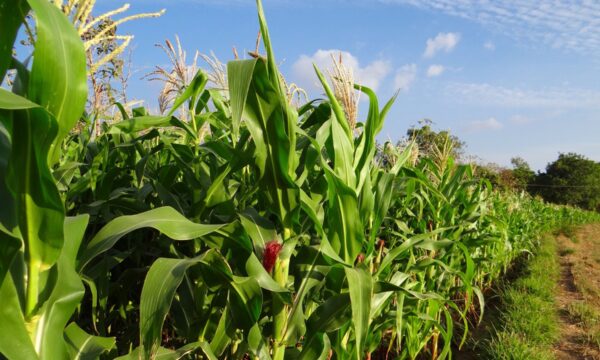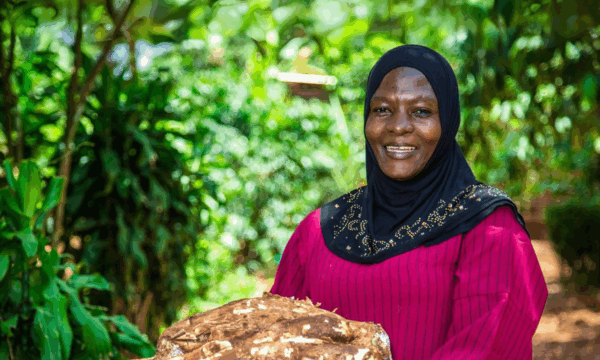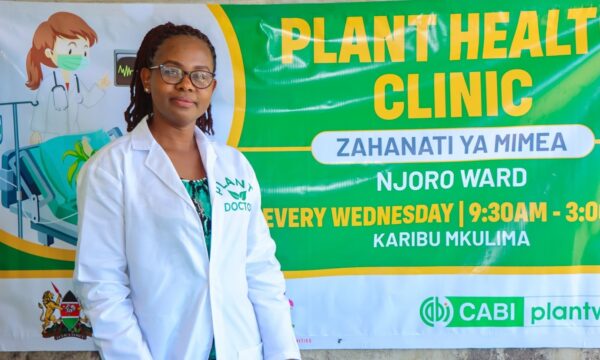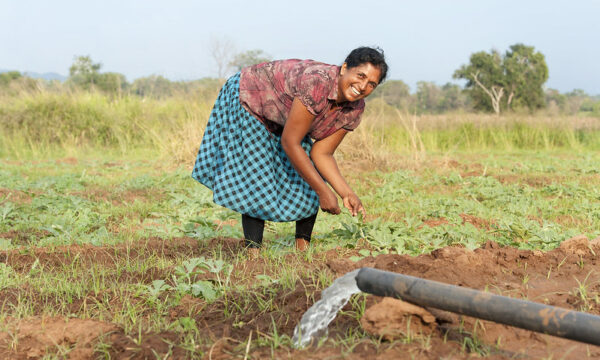Story by Malvika Chaudhary, CABI in India
Photo: Saurav Paul
 Vargur is a small village in the Tamil Nadu state of India where paddy is grown on a large scale. The plant clinics in this region are very popular with farmers. For plant doctor Sarangpani it was a usual day, anticipating the regular crowd of paddy farmers in his plant clinic. He enjoyed this interaction with them, especially after improving his pest diagnostic and advisory skills through training provided by Plantwise and research non-profit M S Swaminathan Research Foundation (MSSRF). His rich experience as a farmer in the past had now translated into service for his community through these regular plant clinics.
Vargur is a small village in the Tamil Nadu state of India where paddy is grown on a large scale. The plant clinics in this region are very popular with farmers. For plant doctor Sarangpani it was a usual day, anticipating the regular crowd of paddy farmers in his plant clinic. He enjoyed this interaction with them, especially after improving his pest diagnostic and advisory skills through training provided by Plantwise and research non-profit M S Swaminathan Research Foundation (MSSRF). His rich experience as a farmer in the past had now translated into service for his community through these regular plant clinics.
Though ‘samba,’ or long grain rice season was usually quiet, this time Balchander and many farmers like him had a different story. The farmers had been seeing white spots on the young leaves of their paddy plant, which began to turn to grey-green in couple of days, bringing them increasing worry. It was time for plant doctors like Sarangpani to take immediate action to try and help Balchander and his neighboring paddy farmers.
Balchander, the first of fifty similar cases, represented the majority of farmers in the clinic that day. The tiny spores of the disease which are all the time afloat in the air had found their way to settle on the rice leafs due to dry soil and cooler temperatures during the daytime. The frequent and prolonged rains in Tamil Nadu were making it all the more favourable for them to evolve into a damaging disease. Sarangpani reviewed Balchander’s sample of his paddy crop and diagnosed it as rice blast. With his training he knew that this disease can occur at any stage of rice growing, and unfortunately this time it happened at the last stage for Balchander when the crop was just few weeks away from the harvest.
There was no time to lose. Immediately the next steps of the plant doctors were to conduct several field surveys in the village and help farmers understand what the symptoms looked like. The diamond shape spots were common to both young and old leaves with a difference that their border would turn from green to brown with maturity. Sometimes the spots would become so frequent and so large that their margins will merge and kill the entire leaf. With the plant doctors work raising awareness of this emerging problem, the farmers quickly learned to identify the disease. But it was the next move that farmers like Balchander were waiting for.
It surely would have been easier to manage if this disease had happened at an earlier stage. Plant doctors would usually recommend systematic steps of prevention, monitoring and then control. Knowing heavy these sort of infestations on the panicles, or the loose clusters of flowers on the branch, may lead to complete yield loss, Sarangpani asked the farmers to acquire and apply, with his monitoring and instructions, tricyclazole, a yellow-column chemical. This yellow-colored column, as found on Green and Yellow Lists or the pest management decision guides for rice blast found in the Plantwise knowledge bank, means this chemical is accepted by all international safety standards but should be used with proper precaution.
Not finding it on his shelf, the local agro-dealer tried his best to suggest an alternative. The other shop was 12 km away from the village and it was not easy to go and buy chemical from there. Farmers consulted the plant doctors before applying this alternative chemicals. Sarangpani was flabbergasted at the casualness of the wrong recommendation that the agro-dealer had given them. His next step was to call Sudhakar, the area agricultural coordinator, for his help. Sudhakar quickly arranged for tricyclazole to be available at the village market.
The joy was apparent in Balchander along with other farmers of the village when they received this solution and were on their way to applying this solution in their field in a day’s time. The dosage and application were well explained to the farmers at the plant clinic. The right step at the right time soon brought smiles to all the paddy growers of the village. An extra 5 bags of paddy, each weighing 60kgs of rice, was a bonus that they got from each acre of their field. The total area of 250 acres surely has a story to tell about the potential and impact of Plantwise in Tamil Nadu and around the world.
2 Comments
Leave a Reply
Related News & Blogs
How plant clinics are strengthening crop health services in Bangladesh
When the first-ever plant clinic in Bangladesh opened in Dhaka in 2013, it initially faced a lack of interest due to its novelty and limited awareness among farmers. However, it went on to expand, providing advice to over 17,000 farmers and led to the…
2 July 2025





Good to hear he started working on this immediately! Leaving it any longer really could have been fatal.
Good website! I truly love how it is easy on my eyes and the data are well written. I’m wondering how I could be notified whenever a new post has been made. I have subscribed to your RSS feed which must do the trick! Have a great day! dbdfgefkggeb